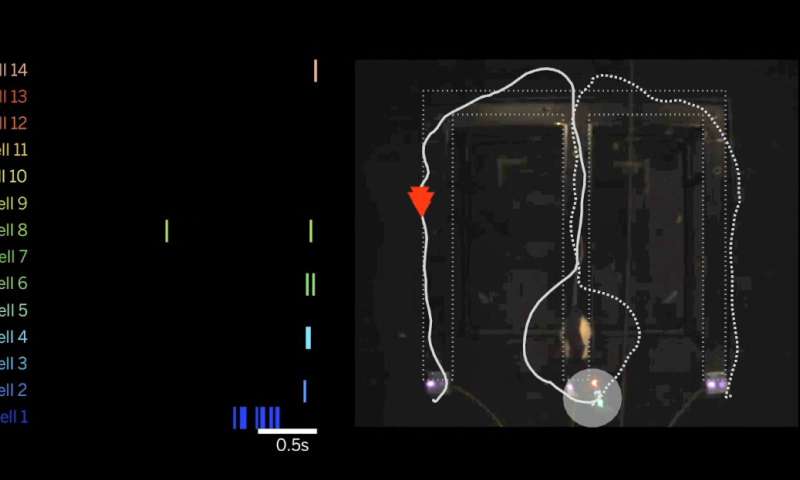
Specialized brain activation "replays" the possible routes that rats can take as they navigate a space, helping them keep track of the paths they've already taken and choose among the routes that they can take next, according to a National Institutes of Health-funded study published in the journal Neuron.
"These findings reveal an internal 'replay' process in the brain that allows animals to learn from past experiences to form memories of paths leading toward goals, and subsequently to recall these paths for planning future decisions," said Shantanu Jadhav, Ph.D., assistant professor at Brandeis University, Waltham, Massachusetts, and senior author of the study. "These results help us better understand how coordinated activation at the level of neurons can contribute to the complex processes involved in learning and decision-making."
The hippocampus, a structure located in the middle of the brain, is critical to learning and memory and contains specialized "place" cells that relay information about location and orientation in space. These place cells show specific patterns of activity during navigation that can be "replayed" later in forward or reverse order, almost as if the brain were fast-forwarding or rewinding through routes the rats have taken.
In previous research, Jadhav and colleagues had discovered these replay events, marked by bursts of neural activity called sharp-wave ripples, lead to coordinated activity in the hippocampus and the prefrontal cortex, an area of the brain just behind the forehead that is involved in decision-making.
But how these forward and reverse replay events influence actual learning and decision-making over time remained unclear. To find out, Jadhav and co-first authors Justin D. Shin and Wenbo Tang continuously recorded the rats' brain activity as the rats learned how to navigate a special W-shaped maze over the course of one day. This allowed the investigators to see how neural representations changed as the rats were learning.
The researchers trained the rats over eight sessions to follow paths according to two rules—a simple rule and a complex rule—giving the rats a reward whenever they reached the correct destination. The simple rule required remembering the start and end locations of the maze paths. The complex rule depended on working memory, requiring that the rats remember the previous path in order to choose the next destination.
The scientists focused their analyses on moments of transition when the rats had paused in between completing one path and choosing the next one. As the researchers expected, replay events in the hippocampus showed reactivation of past paths in a reverse order, as if on rewind, and showed reactivation of the possible future paths in a forward order, as if on fast forward.
The forward and reverse replay patterns were so robust that the researchers could use the recordings to predict where the rats had paused in the W-shaped maze. Continuous recordings of brain activity throughout the entire task revealed shifts in activation patterns as the rats learned the simple rule. At different stages of learning, the researchers could use reverse replay and forward replay patterns to predict the path the animals had just taken and where they were about to go next, respectively. These shifts indicated that reverse replay was important for learning from the previous path, especially in the early stages of learning, while forward replay was important for planning for the next route, especially in the later stages of learning.
Activation patterns related to learning the complex working-memory rule were more consistent over time: Reverse replay events reactivated all possible past choices and forward replay events reactivated all possible future options throughout the learning process.
However, when the researchers looked at coordination between replay events in the hippocampus and the prefrontal cortex, they found that the coordinated reactivation in the two brain areas was correlated with the rats' actual choices—that is, reactivation was stronger for replay of paths that the rats took than for the paths they didn't take.
Together, the findings suggest that coordinated replay across the hippocampus and prefrontal cortex serves an important function in spatial learning and memory-guided decision-making. Specifically, the results suggest that reverse replay is likely to support the ability to reflect on and evaluate paths that have led to goals in the past, whereas forward replay seems to support the ability to think ahead and plan choices that will lead to goals in the future.
"The involvement of 'replay' in memory processes has been observed across many species, including humans, and this study establishes that replay serves as a key neural substrate underlying an internal dialogue across multiple brain regions to support our ability to learn, plan, choose, and deduce," Jadhav concluded.


Your Opinion is valid .